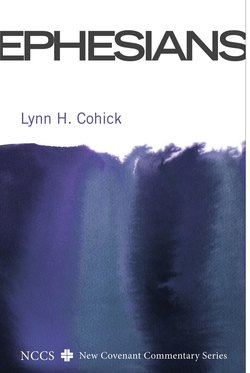Читать книгу Ephesians - Lynn H. Cohick - Страница 5
На сайте Литреса книга снята с продажи.
Preface
ОглавлениеAmbrosiaster1 does well in trying to capture the volume and brilliance of the vision of the Triune God expounded in the six chapters of Ephesians. Pointing to the phrase “length and breadth and depth and height” (3:18), he asks his readers to think of a sphere, whose length is the same as its breadth, and whose depth is the same as its height. He rejoices that the same is true of God, who is boundlessly infinite. Ambrosiaster observes that we cannot thank God enough who, being infinite and infinitely great, yet made possible humanity’s redemption through Christ. Julian of Norwich had a vision of a different sort of sphere, specifically a hazelnut, which seemed so small and insignificant that it might disintegrate into nothingness. This nut symbolized the universe in relationship to God, and she marveled that God would care for something so relatively inconsequential. But she understood that it was God’s vast love which sustained it. In meditating on the great love of God shown in his redemption of humanity from sin, she cried that “all shall be well, and all shall be well, and all manner of thing shall be well.”2
The Letter to the Ephesians invites its readers to sing with Julian that all shall be well. In this epistle, sin has been overcome by Christ’s death on the cross. Saved by God’s grace through faith, Christians are seated with Christ in the heavens. They enjoy full fellowship through Christ’s work in making the two (Jew and Gentile) into one holy people, a temple of the Lord, the Body of Christ. Sealed with the Holy Spirit, they are empowered for holy living.
It has been my joy to wade into this epistle, with its exuberant, extravagant language that, like a stained glass window lit up by the sun’s rays, casts a radiant picture of God and his church. I offer my deepest thanks to Craig Keener and Michael Bird for their invitation to participate in the New Covenant Commentary Series. Their shrewd comments helped me think more clearly and strengthened my arguments. My sincere appreciation goes to the editorial team at Wipf and Stock, especially Chris Spinks, who made the publishing process smooth and efficient. I am indebted to Wheaton College and my dean, Jill Baumgaertner, and associate dean, Jeffrey Greenman, for providing release time to pursue this delightful project. I am deeply grateful to my colleague Michael Graves for our fruitful dialogues on the Greek text of Ephesians. My teaching assistant, Adam Cieszkiewicz, exceeded the call of duty in his diligent research, proofreading, and insightful suggestions for content in the Fusing the Horizons sections. I am truly thankful for the loving support of my children, Sarah and C. J. I dedicate this book to my husband, Jim, who has never failed to love me “just as Christ loved the church and gave himself for her” (Eph 5:25).
1. Ambrosiaster, Epistle to the Ephesians 3.18.2, in CSEL 81.3:93.
2. Julian of Norwich, Revelations of Divine Love.
